Yellow blossoms are catching the foraging eye this week. Locally now is the time to be looking for the light creamy flowers of the Latex Strangler Vine (LSV.) You can certainly tell the plant was not named by a forager of wild food. If they had been a forager, as chef and film maker Alton Brown says, it would have been called “good eats.”
When I first found the vine — technically a liana — I had no idea what it was. It took a few years of shifting through scant reports until I found pay dirt in a Spanish monograph. The “LSV” is a valued and common food source in Central and South America. There it grows to the tops of tall trees and is harvested using long sticks with hooks on the end. It’s on the hit list of warm states like Florida because it can cover citrus trees shading them to death hence “Latex Strangler Vine.” There are a few other “strangler” species so “latex” was added so we know exactly which edible to hate. The leaves and fruit are edible with proper preparation and the blossoms raw (or at least a few.)
A “liana” is a woody climbing plant that grows from the ground into the tree canopy. I suspect native grapes and Virginia Creeper would qualify as lianas. The word is from the Dead Latin ligatura, meaning a twisting or binding. From that we get ligature, a thing used for tying tightly or in music to slur or tie two notes. Ligatura then became lier in French then liana in English. To read more about the Latex Strangler Vine go here.
A second yellow blossom just starting its season is American Lotus. This species ranges far and wide and as the season progresses can in some places clog rivers even parts of the Mississippi. The largest blossom in North America (with the biggest petals) several parts are edible but prime are the seeds in the shower-nozzle like seed pod. The root is also prized but unless cultivated is a calorie-expending pain to dig out of the muck. One of the amazing facts about the American Lotus is that its seeds can remain dormant for several hundred years. Sometimes man-made lakes locally will sprout a surface carpet of American Lotus blossoms. An old lake that has been dry for decades or longer is turned into housing division with a man-made lake as part of the landscaping. The long-buried seeds find themselves in the right wet environment again and bloom. This has caused more than one home-owners association to consult experts on how to kill of the yellow blossoms. Dead lakes are preferred in subdivision because they don’t have to be tended. To read more about the American Lotus click here.
Another yellow seen this week are seeding docks. Though here and there I usually don’t see curly (yellow) dock that often. Merritt Fernald, who was the main botanical man at Harvard for half a century, wrote that all docks (Rumex) are edible. That’s leaving out some important details. Most of them are bitter and require many changes of boiling water to make the leaves palatable. Several make better astringent bandages than food. Still Rumex hastatulus and R. acetosella are popular nibbles and greens because of their tart taste caused by oxalic acid. Interestingly the state of Florida has a paper on R. crispus that has not been released to the public yet. No doubt it’s a baaaaaaad plant. To read more about the docks go here.
There are many challenges to foraging. Most but not all of them involve getting the right plant. Among other issues is harvesting the right plant when you are harvesting the right plant. Sometime you can accidentally get the wrong plant in the right place at the right time. One good example are ripe Virginia Creeper berries in among ripe grapes. To the casual eye they can look similar and the toxic creeper berries can get mixed in with the grapes (remember ripe Virginia Creeper berries are on bright red stems, grapes are not.) This past weekend I was noticing a lot of green grapes. They’ll ripen sometime around September. But in among the green grapes were the fruit you see at the right. They are green Chinaberry tree fruit, and toxic. Our wild grapes turn dark red to purple. The Chinaberry fruit turn yellow then brown. They are not golden grapes as some have thought. Dried they can be used as an insect repellant in drawers and the like but they are not edible.
Pushing the season. Podocarpus macophyllus has a wide range and season. Locally the bulk of them ripen in August. As you can see these are ripening in early June. While unusual that is not unheard of. I’ve also seen them ripening in December. Extending the season extends the foraging opportunities. But do read up on them. The light-colored seed on the end is toxic. We eat instead the fleshy aril that’s behind the seed. Podocarpus are usually trimmed to be hedge or shrubs but if left on their own they become tall trees. To learn more about them go here.
Reishi mushrooms are not edible, but they are medicinal. As herbalism is beyond my expertise you should check with your herbalist before using any. Locally we have two common Reishi mushrooms. One grows almost exclusively on palms (I say almost exclusively because someone always comes up with an exception.) That is Ganoderma zonatum. There isn’t any controversy over its name. It’s the other Reishi, at right, that is in contention. Those of us who find it tend to call it Ganoderma curtisii. Elsewhere in the world they call this mushroom G. lucidum, or G. lucidum var. curtisii. There is a lot of conflicting opinion on what it should be called. The genus Ganoderma is fairly easy to identify by their growth habit and form. They grow on wood, are tough, and have a 90-degree shape.
Upcoming foraging classes:
Saturday, June 13th, Mead Garden: 1500 S. Denning Dr., Winter Park, FL 32789, 9. a.m.
Sunday, June 14th, Red Bug Slough Preserve, 5200 Beneva Road, Sarasota, FL, 34233, 9 a.m.
Sunday, June 21st, John Chestnut County Park: 2200 East Lake Road, Palm Harbor, FL 34685 9 a.m.
Saturday, June 27th, Boulware Springs Park, 3420 SE 15th St., Gainesville, FL 32641 9 a.m.
Sunday, June 28th, Jervey Gantt Recreation Complex, 2390 SE 36th Ave., Ocala, FL, 34471, 9 a.m.
For more information or to sign up for a class go here.
Need to identify a plant? Looking for a foraging reference? Maybe you have a UFO, an Unidentified Flowering Object, you want identified. On the Green Deane Forum we — including Green Deane — chat about foraging all year. And it’s not just about warm-weather plants or just North American flora. Many nations share common weeds so there’s a lot to talk about. There’s also more than weeds. The reference section has information for foraging around the world. There are articles on food preservation, and forgotten skills from making bows to fermenting food. Recent topics include: Becoming a Wild Food Expert, Latex Strangler Vine in Blossom, Seminole Pumpkin Squash, Removing Oxalates, I Believe This Is a Tulip Tree, Virginia Creeper Again. Edible but too small, Here’s One I saw near the office, Transplanted Tree Root Structure, cultivated Apios Americana: Groundnut, My First Pokeweed, Yaupon Holly? Plantain? Sand Toads? Will My Tomatoes Make Me Pregnant? White Bugs on Smilax Tips, Poison Hemlock and Eating Birds, Study and Respect Plants. You can join the forum by clicking on the button on the upper right hand side of this page.
Newsletter #165. To subscribe to Green Deane’s weekly EatTheWeeds newsletter, go to the upper right side of this page.

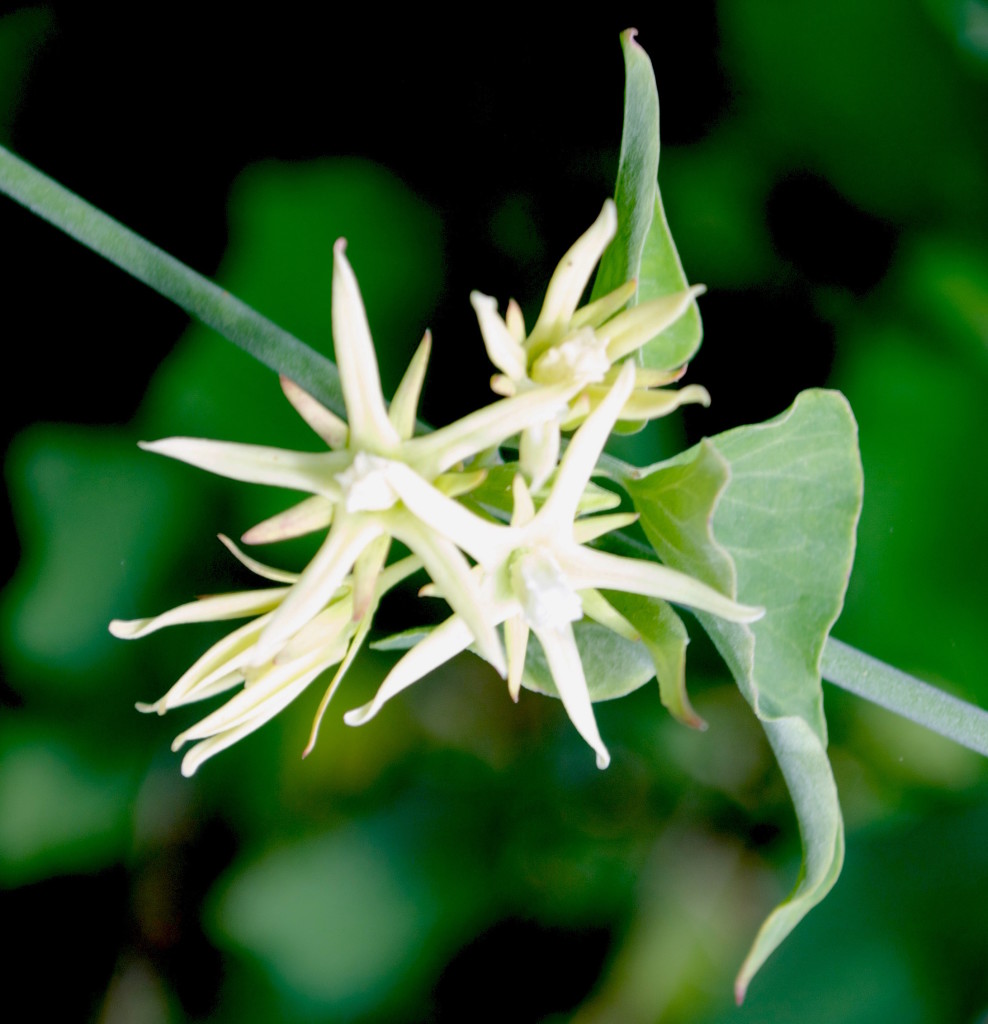
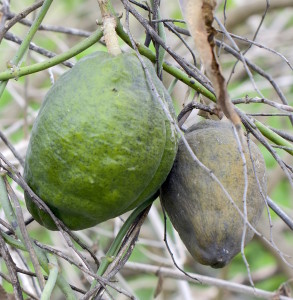
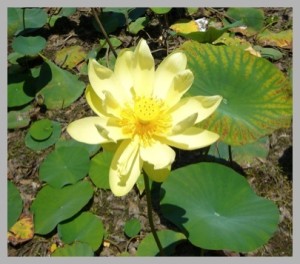
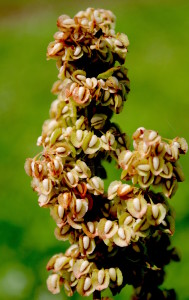
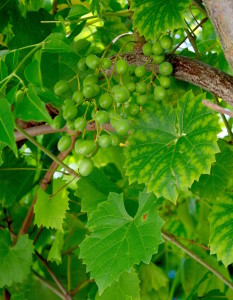
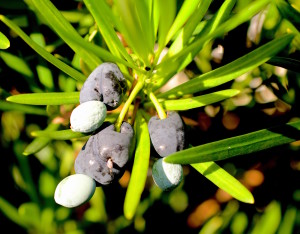
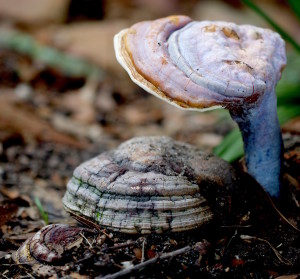

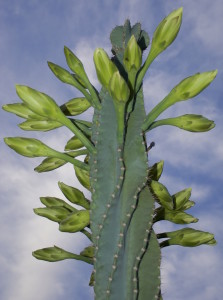

Funny you should mention reishi mushrooms in this newsletter. I was watching a TV program on Discovery Channel today called Live Free or Die. I am not much on most of these survival shows but I think this particular show is closer to reality and uses true researched terms, names, and uses of wild plants most of the time.
In this particular episode one of the character’s young daughter was suffering from a bad cough. He went in search of the reishi mushroom to make a medicinal tea for medicine for his child. In their area of Appalachian Mouintains he stated that Reishi Mushrooms primarily grow on fallen old-growth Hemlock trees.
I can recognise many species of wild mushrooms in Florida and Mississpi, including oyster, morrel, honey and puffballs, but I never consume any because I am not that well versed in wild mushrooms. I had a friend in central Florida who took me out foraging for mushrooms one winter, and was considered as somewhat of an expert in ID of wild mushrooms. The next summer he died (20 years ago) consuming wild mushrooms he had picked. Too dangerous for a mushroom novice like me.
The point is I have used Reishi several times as a poultice and as a medicinal tea with good results.
The lunar year is 11 days ahead of the calendar. Tomorrow, we hope to begin fasting “Ramadan”. Indeed nowadays the southerly breeze carrying the sweet fragrance of “Cynancum laeve “ in my case, “ Morrenia odorata “ as you’ve witnessed, is good evidence for us here in Khartoum to be ready to receive and welcome the rainy season.
I’ve been familiar with C. laeve since childhood and the image of its sprouts never escape my memory. Truly, as you’ve mentioned there is confusion among the species. Going carefully on your article, I thought the plant (protruding from my neighbour’s garden over my deserted gateway ) to be M. odorata having almost all the characteristics mentioned; but what about the size of the fruit!? A squash, avocado, papaya – none of those – instead the dimensions fitted those of C. laeve. I can still see some of the old dry open pods hanging vertically like micro toy boats or canoes. Still some of the dry pods are emitting parachutes.
Previously I believed that every parachute flying in my area belongs to the locally called “Ushur” – Calotropy procera; but now by catching some of those I’m convinced that the only flatter seeds belong to the latter plant. Interestingly on removing some seeds from one of the older – open but not dispersed, a huge number of light brown small insects unlike the familiar ants rushed out of the pod.
My wife once mistook a Morning glory H. Blue, grown as ornamental in our garden, for C. laeve and treated it as a weed. I reacted gently, “ M’me next time leave the M. glory to live to make more ALTERNATE leaves, and why as well believe that if you leave C. laeve with more opposite leaves – much gain we receive – blue blossoms and sweet smell from both we achieve.
I was privileged to join a class you had given in Ocala about two years ago. Anyway, you had brought a vile of small red berries with tiny black dots on them, saying they were very poisonous. Earlier this year I went to visit my mother in Leesburg Fl and found it growing in the side yard!
Is there a recommendation as to how to get rid of it and again was the name Baneberry? or dolls eyes? It’s a red berry not white like you see if you type in Baneberry on the internet. Mom chased the kids away who were over by those awful plants!
Any help / advice greatly appreciated
`~Linda
They were Rosary Peas. Where gloves when you dig them out and handle them.
Morrenia Odorata may well be what is growing thru my katuk thicket. I believe I’ve seen the green fruits on some of the vines I tried ripping out. I blamed the white sap oozing from injured vines for killing off a thriving lima patch a couple years back. I’ll definitely be looking for flowers to confirm this identity